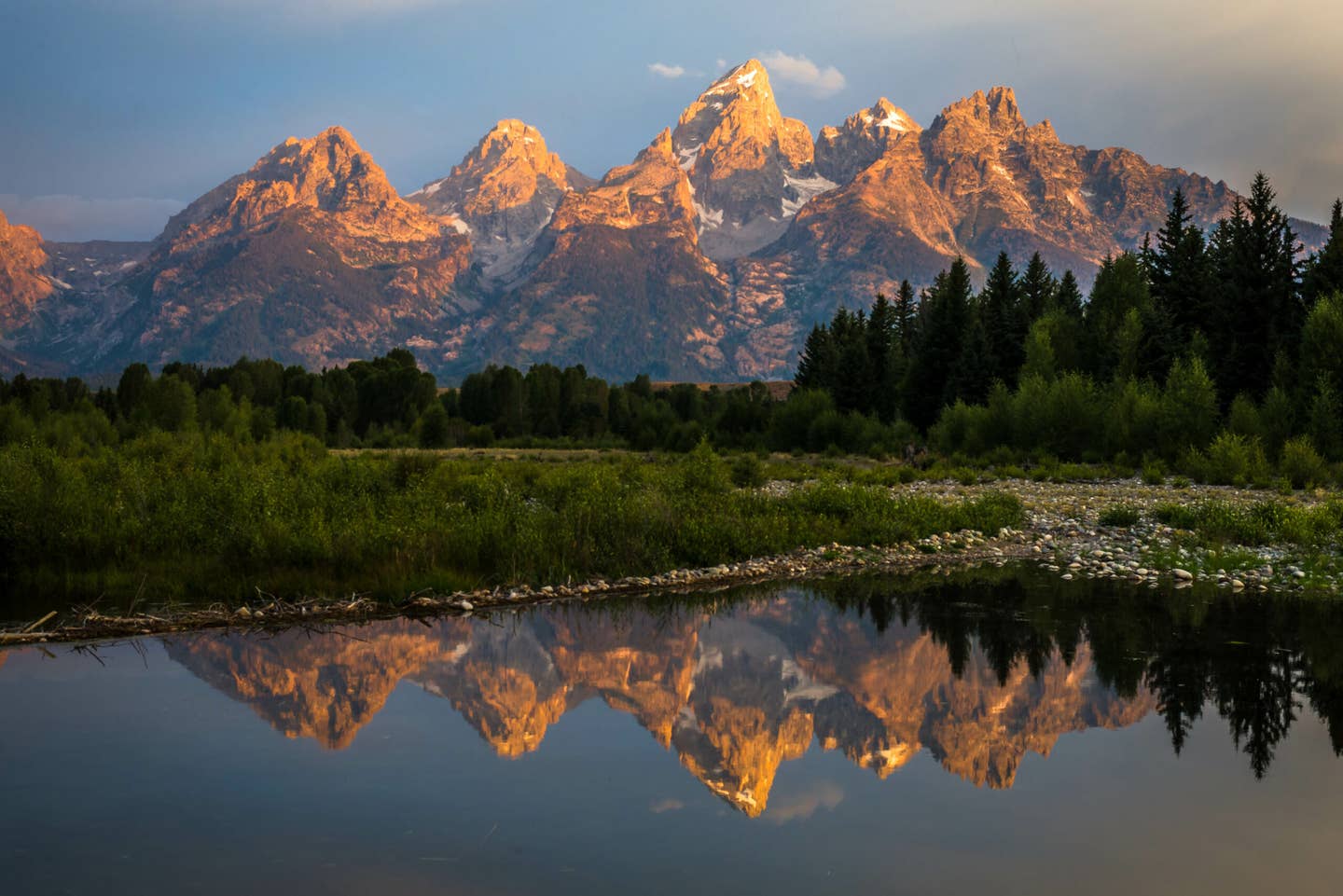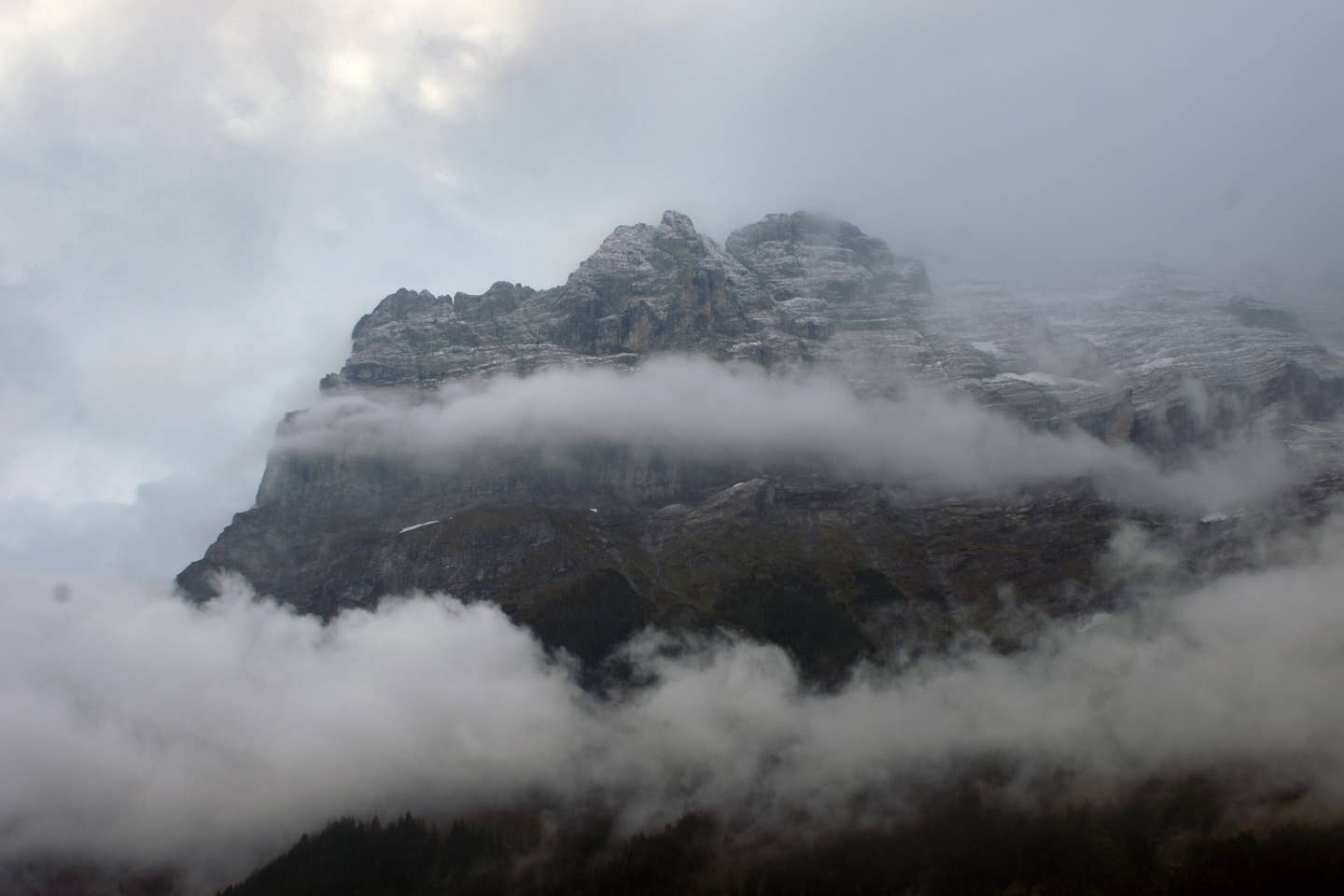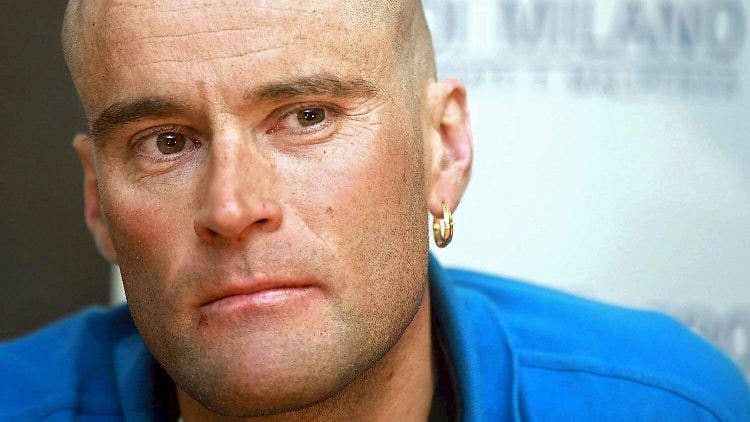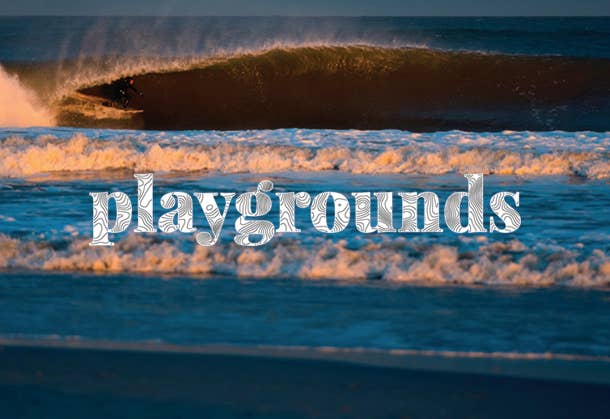

Reliving Hurricane Riley’s Historic East Coast Run, or, Why the Wave Pools Will Never Win
Popular Stories
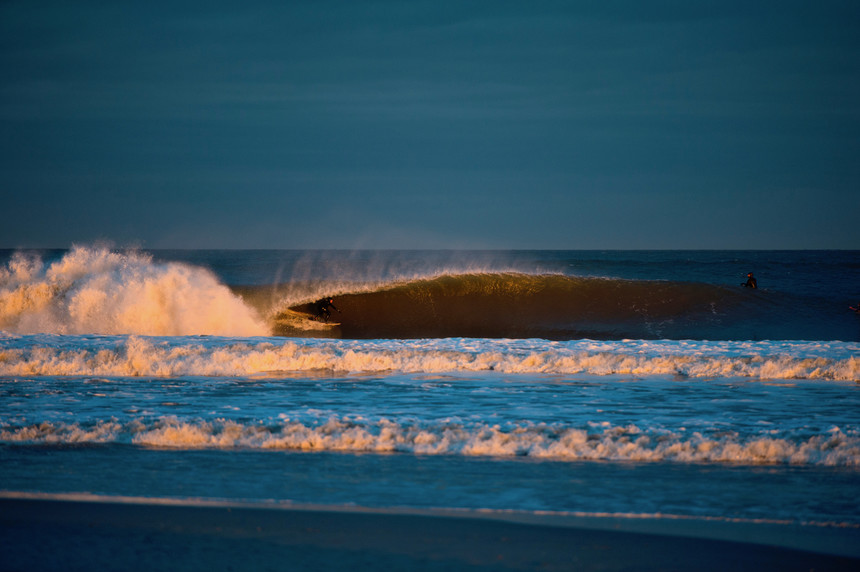 After more than 1,800 miles logged in a rental car chasing perfect swell around the East Coast, our intrepid surf writer came to one concrete conclusion: Wave pools will never replace the search. Michael Ciaramella photo.
After more than 1,800 miles logged in a rental car chasing perfect swell around the East Coast, our intrepid surf writer came to one concrete conclusion: Wave pools will never replace the search. Michael Ciaramella photo.
This past November, through what can only be considered an A-1 job perk, I became one of the few non-professionals ever to surf
Kelly Slater’s wave pool.
I caught eight waves all-up, totally botched a few, only somewhat botched the others, and went home with a virgin-no-longer grin. So what if it was a pay for play experience? Riding a wave that perfect and predictable was, for lack of a holier phrase, fucking awesome. I’d recommend it to anyone.
Considering the current state of wave pool expansion–with one Texas site already open to the public and a plethora of others being built throughout the U.S., Australia, Europe, and beyond–it will soon be possible for everyday surfers to experience this phenomenon all around the world. And while I will continue to embrace surfing’s technological advances with open arms, I was recently reminded, through a weeklong wave-chase in the American Northeast, of a universal surfing truth: Wave pools will never supercede the organic surfing experience.
Australia’s Stephanie Gilmore wraps herself in a man-made cocoon. WSL photo.
I currently live in San Diego, but during my formative years I was a New Jersey-based surf addict. Garden State surfing can be a maddening pursuit–summer is flat, the state’s best waves come in short-lived, typically single-day periods during the frigid winter months. But when everything comes together, New Jersey can produce world class beach break conditions–better, in my opinion, than those you’ll find in Southern California.
So despite the cold, fickle nature of New Jersey surf, I’d been trying for years to return home for a winter swell. Watching East Coast forecasts, checking flight prices, and talking with local friends have been part of my monthly ritual for as long as I’ve lived out west, but for one reason or another, I hadn’t been able to pull the trigger on a swell until March of 2018.
Until Winter Storm Riley.
Riley was unlike any winter storm I’ve seen. Typically, a “Nor’easter” will track across the inland U.S, exit the coast between New Jersey and New York, deliver a day or two of waves, and quickly spin off into the middle of the Atlantic. Riley, on the other hand, was expected to sit in the northeastern crutch (between Maine and New Jersey) for an entire week, sending days of overhead surf from Nova Scotia to the lower Caribbean.
Nor’easters are also famous for their (duh) northeast gales (which blow side-onshore in the Garden State), but for whatever reason Riley’s winds were expected to be a much more tolerable north-northwest, which would leave many breaks groomed for the entire run of waves. In other words, as far as swells in New Jersey go, this looked like a best-case scenario. So I called in some favors, booked a last-minute flight, and headed home for what looked to be the once-in-decade/century/millenium swell.
This is what an East Coast bomb-cyclone looks like. Surfline/LOLA photo.
My red-eye would be one of the last to land in New York City on Friday, March 2nd. Due to its 50 mph gusts and horrid combination rain, snow, and sleet, Riley created unsafe conditions throughout all of the Northeast, leaving many people stranded, snowed-in, and without power.
But who cares, I was there to surf!
Up at 4 a.m. the next day, I left my house prepared for whatever Riley might throw at me. In my car were wetsuits, surfboards, water jugs, ice-scrapers, mittens, and I believe a pair of snowshoes for good measure. Nevertheless, after coming across the bridge into one of Jersey’s grizzled surf towns, I was confronted with an unexpected hazard–coastal flooding.
Over thousands of years, sediments originating from the Appalachian Mountains have slowly accumulated off the majority of the U.S. east coast, creating the barrier islands upon which most coastal communities are built today. These islands, which in some places can be less than 100 feet in width, are separated from the U.S. mainland by sounds, bays, marshes, and other brackish water deposits. All of which is to say that when a big swell fills in, especially at high tide, these barrier islands are known to flood profusely. (That I overlooked this issue was a cruel reminder of how long it had been I was last home for a swell.)
A recent uptick in the rate of sea-level rise has only exacerbated this issue, leading to the very realistic fears that some barrier islands will soon be completely submerged by the Atlantic. That’s why, every single year, east coast communities spend inordinate amounts of money on sand replenishment projects–like, for instance, the $18.4 million dredging project that created the best sandbar in New Jersey history.
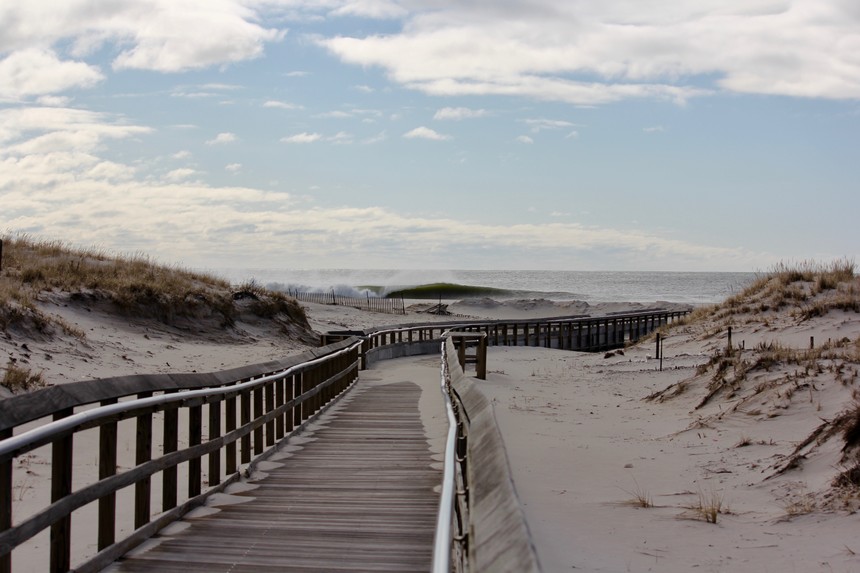 Riley may have caused havoc, but boy was she pretty. Michael Ciaramella photo.
Riley may have caused havoc, but boy was she pretty. Michael Ciaramella photo.
As I would come to learn, this particular town’s annual beach replenishment project was completed one day before Riley’s arrival. One. Day. Talk about a double-edged sword.
On one hand you have the residents (all of them taxpayers, most of them local business owners), who rely on this sand both for the survival of their homes and their yearly incomes. Without any beaches, there would be no summer tourists, and without any summer tourists, there would be no beach-town economy. And when a swell like Riley comes along, producing a week-straight of overhead surf, you can kiss all of that newly delivered sand (and the tax dollars that funded it) goodbye.
On the other hand you have the surfers, who, due to an incurable tube addiction, are happy to forfeit their housing and/or income for a good swell/sand combination. And that is exactly what we got from Winter Storm Riley.
So as my car finally escaped the coastal overflow, I was able to reach my destination and peek over the dunes to every surfer’s favorite sight–peeling offshore tubes, with not a soul in the water.
Out there. Ana Gil photo.
This wave, which once had a name but has been officially rebranded as Newmibia (a play on the spot called Skeleton Bay in Namibia, Africa), is a left-hand point that breaks atop pure, golden sand. The spot is known to be relatively soft and homely, but thanks to its recent $18.4 million cosmetic surgery, Newmibia transformed into a thick-lipped, long-legged beauty.
Surfers, photographers, and spectators alike were freaking out at the sight. Average surfers were getting two, three, sometimes four barrels per wave. North Carolina’s Brett Barley, famous for his lefthand tube antics, got a 15-second funnel (the longest of his life) which is especially ridiculous for in the Garden State. Even Sam Hammer, who is widely considered New Jersey’s premier surfer of the past two decades, called it “The best left setup I’ve ever seen at home.”
Due to the strength and angle of the swell, Riley’s current was horrific, to the point that a surfer would drift 200 yards down the beach before reaching the lineup, which was a mere 50 yards from shore. Once he landed out the back, incessant paddling was required just to stay in position for a wave. Across the half-mile span of point, a surfer typically had time to catch two normal waves, or one really long wave, before reaching the end of the bay. At which point he’d have to get out and walk against the wind back the top of the point.
So for all of Saturday… and Sunday… and Monday and Tuesday, I spent upwards of seven hours in a 5-4-3 wetsuit, making mile-long ellipses up and down the beach, both watching and riding some of the best waves I’ve ever seen in my home state. Every night I went to bed emotionally drained, often in pain from the atypical muscle exertion, and somewhat dreading waking up to do it again the next day. But with Riley’s ephemerality weighing heavy on my conscience, I was forced to fight through the overwhelming exhaustion and continue my wave search.
Sign Up For Our Newsletter
The half-mile walk up the point, while tiring, was no match for the New Jersey surfers’ will when wave like this were rifling across the sand. Ana Gil photo.
From Wednesday-Friday the swell and wind changed direction, forcing me to abandon a now-sandless Newmibia (Riley took a serious toll on the beach replenishment efforts) and alter my course. Over the next 72 hours I bounced between New York, Maryland, and all the way down to North Carolina’s Outer Banks, covering a total of 1,800 miles to chase that effervescent system. Talking with friends along the way, most of whom joined me for Riley sessions throughout the Northeast, there was a prevailing sentiment that “Yes, this was the best swell any of us had ever seen.”
While New Jersey provided a steady stream of left-hand tubes, New York had less of a directional bias, producing quality A-frame peaks for days on end. Michael Ciaramella photo.
But here’s the kicker.
Looking back on Riley, it’s not the endlessly spitting tubes that I remember most; it’s all the little moments in between.
The constant forecast checking. The sketchy flights. The coming over the dune. The miracle sandbar. The marches against the wind. The endless paddling. The cold. The weird waves. The ugly waves. The parking lot antics. The cheering a friend in the tube. The mocking a friend getting worked. The tube-enhancing sunsets. The near-sleepless nights. The hours on the road. The reception from locals. The “It’s ON… again!” texts. The sand that to this day remains embedded in my scalp.
Basically all of the moments that make a surf trip great, beyond the waves themselves. None of that is present with wave pools; just cold, empty, beautiful, characterless perfection. And when our time on this planet is wearing thin, when the fleeting moments of youth and vitality have left our entirely too-mortal beings, when our feeble shoulders can no longer withstand the duress of near-impossible paddle outs, and our surfing days are confined to whatever crumbly waves we can pick off in our advanced age, it won’t be the endless tube rides created at the flick of a switch we remember: It will be small, quirky moments within the journey.
There’s something existentially arousing about finding that special wave, blindly scratching over the ledge, and watching an electric sunset from the tube. Even if you don't get that deep.
The World Surf League recently disclosed that for just under $10,000, any schmuck can buy his way into a one-hour session at Kelly Slater’s wave pool. Unless they’ve changed their methods since I visited the plant in November, that means you’ll be guaranteed two waves with the option to catch others’ scraps should they fall.
So we’re talking roughly $5,000 for each “perfect” wave, plus whatever it costs to get to Lemoore, which, I should warn you, is nothing more than a small farm town in California’s middle.
But frankly, it’s not even about the money. It’s about the uncomfortably awesome moments you endure throughout a true surfing adventure.
Because at a wave pool, I can assure you: there will be no forecast checking, no coming over the dune, no marches against the wind nor sand in your scalp. There will only be the act of surfing itself, which, as great as that may be, it’s not great enough to forfeit all other aspects of an organic surfing experience.
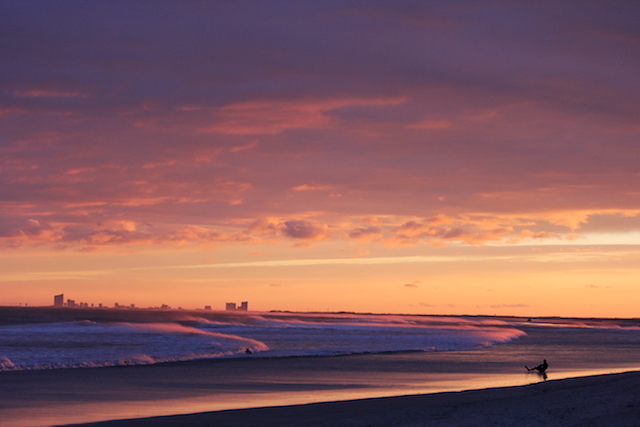 Natural beauty can never be replicated. Ana Gil photo.
Natural beauty can never be replicated. Ana Gil photo.
Thinking back to my virgin-no-more smile after visiting the wave pool, I’ve realized that this whole man-made/natural wave argument is a little bit like sex.
Since the beginning of time, and now even moreso with the advent of the internet, physical pleasure is only a few clicks/phone calls away at any given time if you've got the cash. For a nominal fee, anyone so inclined can purchase the physical comfort of a physically attractive other for one night and avoid all the struggle, denial, and heartbreak inherent to the pursuit of procreation and love
Or they can meet a person at a bar, grocery store, or pumpkin patch, introduce themselves, play a game of phone-tag, get brushed off on several occasions, only to eventually collide with this person at right place and time to enjoy an evening of serendipitous skin-to-skin contact. A victory that, because never guaranteed, forces the protagonist to employ a lifetime of knowledge, skill, and dedication to achieve their goal, if they are to be successful.
Now tell me which of these options, both during and in the afterglow, will be more fulfilling? Which will you be most proud to tell your friends, maybe even future children about?
That’s why wave pools will never win.
